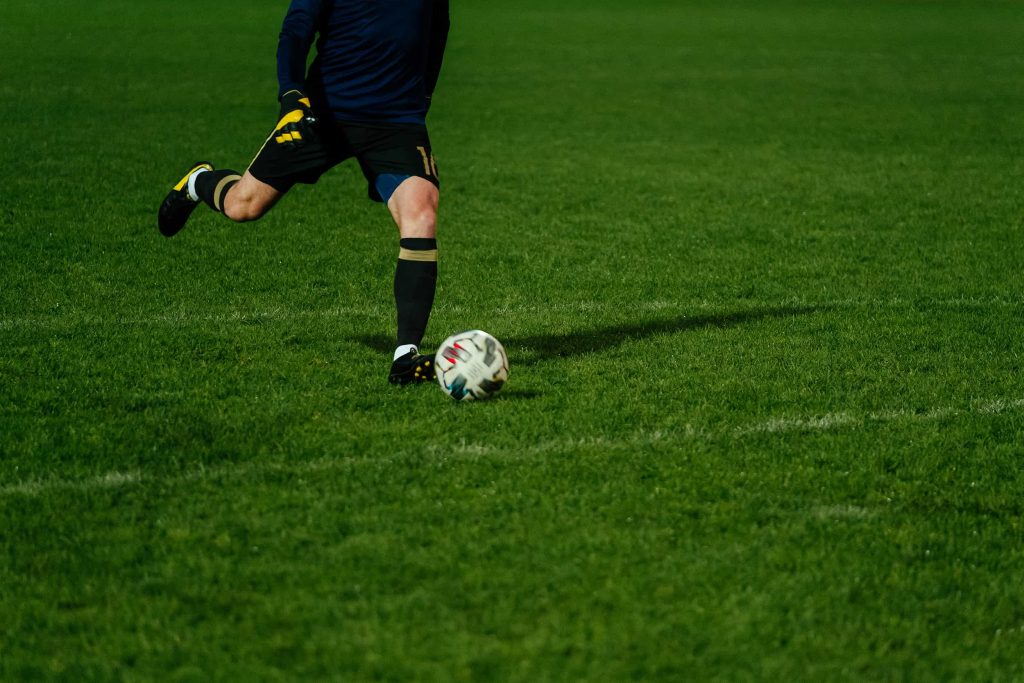On the 28th of May 2018 Borussia Dortmund paid €5 million to bring Marius Wolf to the Signal Iduna Park from Eintracht Frankfurt. The young winger was a key figure for Nico Kovac’s side and capped off a very good 2017/18 season by defeating Bayern Munich 3-1 to win the DFB Pokal Cup final.
Playing Background:
Wolf was born on the 27th of May 1995 in the German town of Coburg, Bavaria. He began his academy career in 2008 for 1. FC Nurnberg before moving on to 1860 Munich in 2012. In 2014 he made his senior debut for the second team before making his first team debut in the same season. After two seasons in Munich he transferred to Hannover 96 and played for both their first and second teams.
In January 2017, he left Hannover and was loaned to Eintracht Frankfurt for the remainder of the season. His loan spell was eventually extended for the 2017/18 season before Frankfurt exercised the option to sign him permanently and he signed a contract until June 2020. Wolf then went on to appear over 30 times for the club, scoring 5 goals and was the 6th highest assist provider in the Bundesliga last season. His background just goes to show how astonishing his career rise has been, and highlights how hungry, determined and clinical he’s been when granted the opportunity. 4 years after being dropped from 1860 Munich’s first team, Marius Wolf will now compete with Christian Pulisic for a place in Dortmund’s Bundesliga and Champions League squads.
Playing Strengths:
Crossing:
Wolf plays primarily as a right-sided winger and was used to great effect in this position in 2017/18. Of his 11 Bundesliga assists last year, 5 of them came from outwide.
Average position according to Wyscout
It’s in these wide areas where Wolf will be expected to deliver his largest attacking contribution. Last season he had an expected assists(xA) score of 0.17 per 90. However he overachieved and his xA90 reached 0.27 by the end of the season.
 Credits: Understat
Credits: Understat
Whether his overachievement can be repeated remains to be seen. However, the fact that he was recruited indicates that they were missing his crossing skillset on the right-wing(or will miss it in the future with Pulisic subject to potential transfer bids).
Physical Traits:
Wolf’s physique and athleticism will be a huge boost to Dortmund. High-pressing or not, his physical traits will ensure that he adapts to any style that Lucien Favre. In pre-season, he was mainly tasked with defending opposing fullbacks, whenever the team established itself in a mid-block structure. When Dortmund regained the ball he would look to accelerate forward and take advantage of any space left by the opposing fullback.
It’s his acceleration that’s so impressive especially when quick transitions are required. With a high sprint speed and high stamina levels too, it’s no wonder Wolf managed 11 assists in a team that relied on transitions to create opportunities. As you can see in the image below, he covers a lot of ground during games, just like I mentioned in my player analysis of Achraf Hakimi.

Wolf’s pre-season heat map according to Wyscout
Weaknesses:
Finishing:
Wolf is almost always used as an out and out winger who sticks wide to the touchline. His main task in possession sees him being involved during build-up play. After this he seeks to play balls into the box for teammates to convert. The problem with this is that he rarely gets into the box himself. Opponents will use this and won’t worry about dropping extra men to defend against him as he isn’t a threat in this area. When he does get into the box, he doesn’t carry much threat either, despite being 6 ft. 2 in.
Passing:
For this aspect I compared Wolf to his direct competitor in Christian Pulsic. As it turns out Wolf’s contribution during the build-up isn’t so stellar.

Credit: Understat
xGBuildup90 is basically the total xG of every possession the player is involved in without key passes and shots per 90 miutes. It is clear to see that Wolf’s 0.17 is much lower compared to Pulisic’s 0.28. This is probably best explained by Eintracht Frankfurt’s contrasting style of play compared to Dortmund’s last season. Dortmund spent far more time controlling possession, while Frankfurt focused on creating chances immediately after regaining possession. So it makes sense if Wolf doesn’t match Pulisic in this respect.
xGChain90 however is the total xG of every possession the player is involved in per 90 minutes. This is the worrying metric. Pulisic’s xGChain90 is 0.25 higher than Wolf’s which means he contributes less shots and key passes per 90. His value in the final 3rd therefore isn’t good enough. Alas, he is going to play in team that maintained an average of 56.9% possession per game, having left one that only controlled 48.8% possession per game. But his creative passing needs to improve but he will have a increased chance to do so, if Dortmund continue to dominate the lion’s share of possession. Lucien Favre also needs to fix certain issues that prevent them from creating more chances. But again, I see no reason as to why Marius Wolf cannot improve in this area.
Conclusion:
Marius Wolf has one of the most intriguing career rises in recent years. He’s gone from playing for Hannover’s reserves to defeating Bayern in the DFB Pokal Cup final in just 18 months. His crossing and physical traits will add huge value to Dortmund and represents a big upgrade on Andriy Yarmolenko. His dogged determination coupled with his steady momentum, means that there’s little than can prevent Wolf from improving on his weaknesses. So beware…beware of the Wolf.




